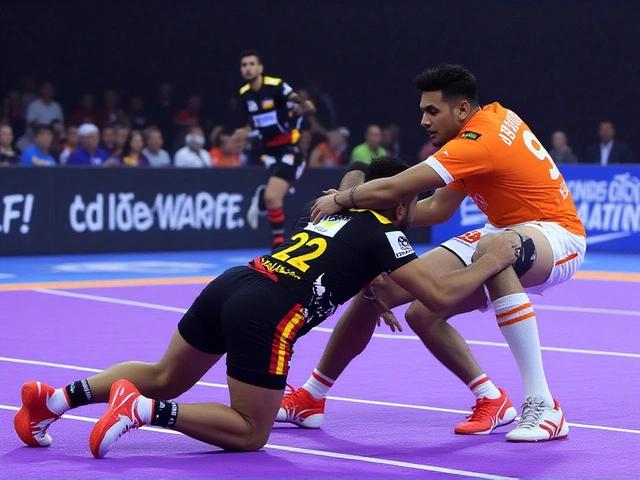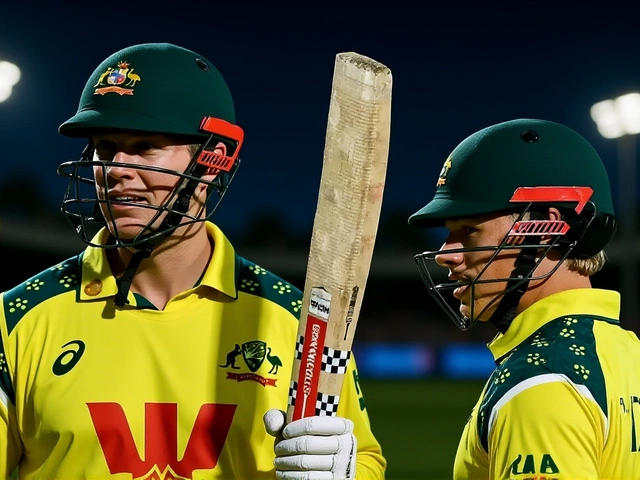
Sports September 12, 2025
Asia Cup 2025: Bangladesh crush Hong Kong by 7 wickets in Abu Dhabi opener
Bangladesh break new ground with clinical win in Abu Dhabi
Bangladesh ticked off two firsts in Abu Dhabi: their first T20I win over Hong Kong and their first victory at the Sheikh Zayed Stadium. They made it look routine too. Chasing 144, Litton Das steered a calm, calculated pursuit with 59 off 39, Towhid Hridoy finished unbeaten on 35, and the target disappeared with 14 balls left. The day had started with Hong Kong choosing to bat and posting 143/7; it ended with Bangladesh cruising home by seven wickets and pocketing early momentum in the Asia Cup 2025.
Hong Kong’s total looked competitive at the halfway mark but not imposing. Nizakat Khan top-scored with 42, Zeeshan Ali added 30, and there were pockets of intent. The problem? Bangladesh’s bowlers controlled the pace of the game, especially either side of the drinks break. Tanzim Hasan Sakib (2/21) set the tone with tight lines, Rishad Hossain (2/31) teased edges and miscues, and Taskin Ahmed (2/38) worked the hard length. When Hong Kong needed a final kick, Bangladesh’s death bowling shut the door.
That control with the ball carried straight into the chase. The openers, Parvez Hossain Emon and Tanzid Hasan, took the sting out of the new ball and kept the board ticking. Once Litton walked in, the tempo sharpened without ever feeling rushed. He picked gaps, dragged the quicks square, and put away anything even a touch short. His 59 featured six fours and a clean six, but more telling was the rhythm: no forced shots, no panic, just scoreboard pressure applied in steady waves. Hridoy’s 35* off 34 tied everything together. Their 95-run stand for the third wicket was the match’s beating heart.
Litton’s exit in the 18th over—a chop-on while aiming big—came with the game already done. Bangladesh needed two by then. Hridoy tapped the single to deep square; Jaker Ali was there to watch it home. It was neat, workmanlike, and exactly what a side wants from an opening game: points in the bag, a net run-rate nudge, and no late drama.

How the game tilted—and what it means next
Abu Dhabi often rewards discipline more than flair, and Bangladesh read the surface early. The pitch offered enough grip for the spinners to play, without being a minefield. That shaped the plan. Rishad’s leg-spin was used as a middle-overs clamp, Mahedi Hasan’s control kept the singles honest, and the seamers rotated pace off the ball. The big square boundaries did the rest, turning risky swings into catching practice near the rope or mis-hits to the deep.
Hong Kong had their moments. Nizakat’s 42 was bright and busy, and Zeeshan’s 30 gave the innings a base. But they stalled precisely when they needed to press on. Dot-ball pressure piled up, the strike got stuck, and the last five overs lacked the finishing punch. Bangladesh’s fielders held their catches, cut angles smartly, and denied easy twos. In T20s, that’s often the hidden edge.
In the chase, Bangladesh played to a clear plan: reduce risk early, pick off the weaker overs, and keep wickets in hand for a controlled finish. Litton was the difference-maker. He didn’t blast the game open; he squeezed it until it gave way. Hridoy’s role was just as valuable—calm, low-drama singles, sharp running, and the odd release boundary to keep the asking rate harmless. Together, they bridged the innings from a cautious start to an unhurried finish.
Three things Bangladesh got right:
- They bowled to a field, not a template—cutters into the pitch, hard length at the body, and spin that asked batters to hit against the turn.
- Litton led from the front, setting tempo without risking a collapse. That 59 might not be a highlight-reel knock, but it was high-value leadership.
- The middle order stayed organized. No panic, no loose strokes when dot balls showed up. That’s how you win chases on sticky surfaces.
Three things that hurt Hong Kong:
- They couldn’t turn base into bonus in the last five overs. The platform was there; the surge wasn’t.
- Too much depended on Nizakat and Zeeshan. Once they were gone, the innings lost shape.
- With the ball, they didn’t force Bangladesh to hit into the wind or bowl dry channels for long enough. The pressure didn’t stack up.
The numbers tell a clean story. Hong Kong: 143/7. Nizakat Khan 42, Zeeshan Ali 30. Bangladesh bowlers: Tanzim Hasan Sakib 2/21, Rishad Hossain 2/31, Taskin Ahmed 2/38. Bangladesh chase: 144 needed, done in 17.4 overs, seven wickets in hand. Litton Das 59 (39), six fours and a six. Towhid Hridoy 35* (34). A 95-run stand that broke the back of the equation. It’s early days in the tournament, but a win with 14 balls left does the net run-rate no harm.
Selection-wise, Bangladesh looked balanced. Pace up front, spin in the middle, and batting depth that didn’t need to show itself. The top order—Parvez Emon, Tanzid Hasan, and Litton—set a platform, the engine room of Hridoy and company stayed calm, and the lower middle order remained in reserve. For a team often accused of over-complicating T20 roles, this game was refreshingly straightforward.
For Hong Kong, there were positives to carry forward. Nizakat’s timing, Zeeshan’s calmness, and patches of new-ball control give them a base. But they’ll know the upgrade needed: more boundary options in the middle overs, better strike rotation against spin, and a clearer plan for the last four. Associate teams often live in fine margins; the death overs are where those margins stretch.
The context matters. This was an opening fixture, not a knockout. The best teams settle early, learn quickly, and peak late. Bangladesh got the first part right. The bowling group is in rhythm, the captain is among runs, and the batting looks less fragile than it did a year ago. Stiffer tests wait—against higher-ranked attacks and sharper death bowling—but a calm win is still the best possible start.
What to watch next? Bangladesh’s adaptability when the pitch is flatter and totals balloon past 170. Their powerplay intent with the bat. Rishad’s role when the ball skids on. And for Hong Kong, the batting order: who takes ownership of overs 7–15, and who finishes? The schedule will move fast, and sides that learn on the fly tend to surprise.
Strip it down and the message is simple. Bangladesh brought clarity, Hong Kong brought fight, and on a surface that rewarded smarts, the smarter side won. It wasn’t flashy, but it was convincing—the sort of early-tournament performance that calms a dressing room and sets up the week.




